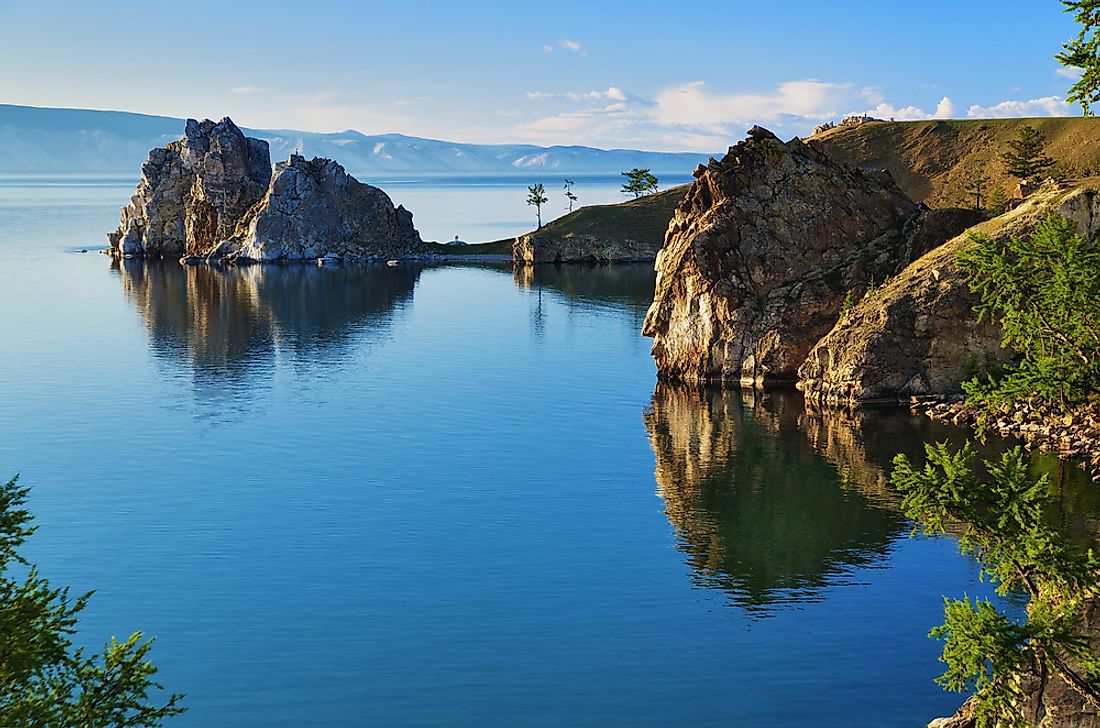What is the Deepest Lake in the World?

Lake Baikal is actually the deepest natural lake on Earth and also the widest freshwater lake in terms of volume. The name Baikal is a Mongolian name which means "the natural lake". The rift freshwater lake is in Southern Russia, right between the Buryat Republic and Irkutsk Oblast. The lake contains about 23% of the fresh water on earth. With a capacity of 5,670 cubic mi, it has more freshwater than all the great of North America Lakes. The lake has a maximum depth of approximately 5,387ft and is considered the oldest lake on earth and 17th largest regarding the surface area.
Geology of the Lake
The lake is in a rift valley which was formed by the Baikal Rift Zone in a place where the crust is pulling apart slowly. Currently, it is 47mi wide and 395mi long thus making it the largest freshwater lake in Asia. Its bottom is approximately 3,893ft below the sea level and below it is 4.3mi filled with sediments thus putting the rift’s floor about 6.8mi below. The Baikal rift is active and young therefore it widens approximately 0.8in annually.
Baikal is believed to be between 25 to 30 million years old thus making it the oldest in geology history. The lake is unique among other high-altitude and large lakes since the continental ice-sheet has never scoured its sediments. The lake is divided into three regions which vary in depth, the central (5,200ft), north (3,000ft) and south (980ft) basins. The lake is surrounded by Taiga, Barguzin range, and the Baikal mountains.
Kurbat Ivanov was the first European to visit the lake in 1643. In the past, the Russians referred to this lake as Baikal Sea instead of a lake. A Siberian tribe, known as the Kurykans, which lived in this area named the lake a local name which translated to "much water", later the Yakuts called it Bay gol (rich lake) and the Baryats referred to it as the Baygal nuur (natural lake).
Flora and Fauna
The lake has a wide variety of life form including over 2,500 animal and 1,000 plant species; in fact, 80% of the animals in Baikal are endemic. Marsh thistles grow on the eastern part of the lake. Some macrophytic vascular crops are growing in the shallow bays. The shallow bay has over 85 submerged macrophytic species including various genres like Sparganium, Potamogeton, Myriophyllum and Ceratophyllum. In the 1950s the Elodea Canadensis species was introduced into the lake. The aquatic flora of Baikal Lake is dominated by various green algae species like Ulothrix, Tetraspora, and Draparnaldioides on the shallow bays while the Cladophora and Aegagrophila are found at a depth of approximately 100ft.
There are numerous Baikal seals on the lake also known as Nerpa. Nerpa is one of the 3 freshwater seals on earth with the others being the sub-species of the Ringed seals. A more extensive range of mammals on the lakes habitats including red fox, moose, wild boar, wolf and brown bears among others. There are less than sixty-five native fish species in Baikal, although over half of these fishes are endemic. The lake also hosts over 350 subspecies and species of the Amphipod crustaceans. These amphipod species are quite diverse in appearance and ecology ranging from the parasitic Pachyschesis to the herbivorous Micruropus, and Palegic Macrohectopus. Some of the invertebrates include snails, flatworms, nematodes annelids, and sponges.











